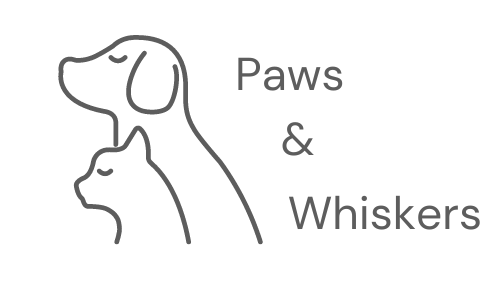As a dog owner, the thought of animal control stepping in and taking your furry friend is a scary one. Whether it's because your dog wandered off, was accused of bad behavior, or there was some misunderstanding, knowing what animal control can do and your rights can help you stay calm and take the right steps.
This guide is here to help. We’ll explain what animal control can do, how to protect your dog, and what to do if you ever find yourself in a tricky situation.
What Is Animal Control?
Animal control is a local government agency responsible for enforcing laws related to animals. This can include everything from responding to loose dogs and addressing cases of abuse to investigating dog bite incidents. To better understand what animal control can do, it's important to recognize the specific roles and limitations they have in your area.
Animal control officers may:
- Pick up stray or loose dogs.
- Investigate reports of neglect or abuse.
- Enforce licensing and vaccination laws.
- Handle dangerous or aggressive dogs.
Understanding what animal control can do in your community helps ensure you follow the rules and keep your pet safe.
When Can Animal Control Take Your Dog?
There are specific situations where what animal control can do includes seizing a dog. Let’s break them down:
1. If Your Dog Is Running Loose

Most communities have leash laws, and a dog found wandering without its owner can be picked up by animal control. This is often called “running at large.”
- Example: If your dog slips out of your yard and is found in a park, animal control may seize it.
- Tip: Always ensure your dog is securely fenced or leashed to avoid this situation. Consider using an AirTag dog collar or a GPS collar, to locate your dog quickly if they get loose.
2. If Your Dog Isn’t Licensed
Many areas require dogs to be licensed and wear tags showing their license. If your dog is caught without proper identification, it could be impounded. Licensing ensures compliance with local laws and is a simple way to reduce the risks related to what animal control can do.
- Why This Matters: Licensed dogs are often held longer, giving owners more time to reclaim them.
- Solution: Make sure your dog’s license and vaccinations are always up to date.
3. If Your Dog Is Deemed Dangerous
Dogs that have bitten someone or displayed aggressive behavior may be seized by animal control. These are among the serious steps included in what animal control can do to protect public safety.
- What Happens Next: In most cases, there will be a hearing to determine whether the dog poses a threat.
- Pro Tip: Regular training and socialization can help prevent incidents that might result in your dog being labeled as dangerous.
4. If There’s Evidence of Abuse or Neglect
Animal control can intervene if they have reason to believe a dog is being abused or neglected.
- Example: A dog left outside in extreme weather without shelter could be seized.
- Legal Note: Animal control typically needs a warrant to enter private property unless there’s an emergency.
What Animal Control Cannot Do
These are among the serious steps included in what animal control can do to protect public safety.
1. Search Your Property Without Permission
Animal control officers cannot enter your home or yard without:
- Your permission.
- A valid search warrant.
- An emergency situation where a dog or person is in immediate danger.
2. Take Your Dog Without Just Cause
Animal control must have a legal reason to seize your dog. If they can’t provide a valid explanation or documentation, you have the right to challenge their actions.
3. Ignore Your Right to Due Process
As a dog owner, you’re entitled to:
- Notification if your dog is seized.
- A hearing to present your side of the story.
- The ability to appeal decisions, such as a dangerous dog designation or euthanasia order.
How to Protect Your Dog From Animal Control
Prevention is the best way to keep your dog safe and avoid conflicts with animal control. Here’s how:
1. Keep Your Dog Secure
- Regularly inspect your fences and gates for weak spots.
- Use a leash when walking your dog in public.

2. Ensure Proper Identification
- Use ID tags and a microchip to help animal control contact you if your dog is found.
- Pair your dog’s tags with a tracking tool, such as the Paws & Whiskers AirTag dog Collar.

3. Follow Local Laws
- Stay informed about leash laws, licensing requirements, and vaccination rules in your area.
4. Train and Socialize Your Dog
- Enroll in obedience classes to help your dog develop good behavior.
- Expose your dog to various environments to reduce fear and aggression.
What to Do If Animal Control Comes to Your Door
If animal control visits you, it’s important to stay calm and handle the situation carefully.
1. Be Polite but Firm
- Ask the officer why they are there and if they believe you’re violating any laws.
- If they request to search your property, ask to see a warrant. Without one, you are not required to let them in.
2. Know Your Rights
- You have the right to remain silent and consult an attorney before answering questions.
- You don’t have to sign anything without legal advice.
3. Document the Encounter
- Write down the officer’s name, badge number, and what was said.
- Keep records of any documents or citations you’re given.
Steps to Take if Animal Control Takes Your Dog
If your dog is impounded, act quickly to get them back:
1. Contact Animal Control Immediately
- Find out where your dog is being held and the steps needed to reclaim them.
2. Provide Proof of Ownership
- To challenge what animal control can do, you need to present records like licensing, vet documentation, or recent photos.
3. Request a Hearing
- If your dog was taken for behavioral reasons, request a hearing to present evidence, such as training certificates or witness testimony.
4. Consult an Attorney
- A lawyer specializing in animal law can guide you through the process and protect your rights.
Final Thoughts: Stay Proactive to Keep Your Dog Safe
Animal control plays an important role in protecting communities, but as a dog owner, you have rights and responsibilities. Understanding what animal control can do is essential for every dog owner. By keeping your dog properly identified, following local laws, and knowing how to handle animal control encounters, you can reduce the risk of losing your beloved pet.
For more tips on keeping your dog safe, check out our articles on Can Animal Control Take My Dog?, How to Find Your Lost Dog and How the Apple AirTag for Dogs Keeps Your Pet Safe and Sound. Or explore the Paws & Whiskers AirTag Dog Collar to add an extra layer of protection for your furry friend.


